S&P 500 recovers but Europe remains weak
By Colin Twiggs
August 16th, 2014 1:30 p.m. AEST (11:30 p:m EDT)
Advice herein is provided for the general information of readers and does not have regard to any particular person's investment objectives, financial situation or needs. Accordingly, no reader should act on the basis of any information contained herein without first having consulted a suitably qualified financial advisor.
S&P 500 and Europe
Summary:
- Europe continues to test support.
- S&P 500 recovers.
- VIX continues to indicate a bull market.
- China bullish.
- ASX 200 recovers.
Dow Jones Europe Index continues to test its primary trendline and support at 315/325. 13-Week Twiggs Momentum below zero warns of a primary down-trend. Breach of primary support at 315 would confirm.
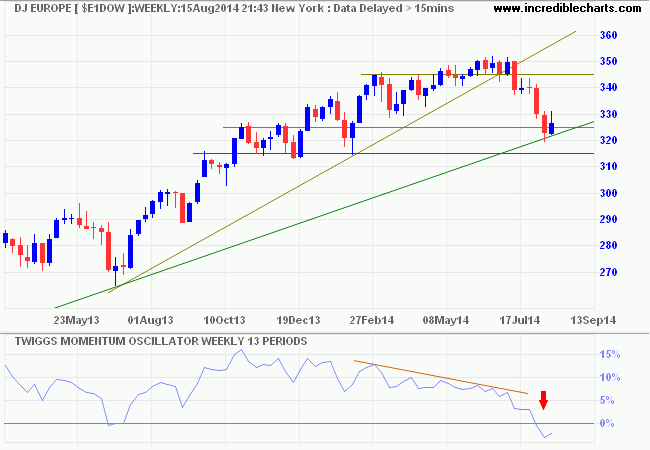
The S&P 500 recovered above 1950, suggesting another test of resistance at 2000. Recovery of 13-week Twiggs Money Flow above its July high would suggest that buyers have taken control. Reversal below 1900 is unlikely, but would warn that the primary trend is slowing.
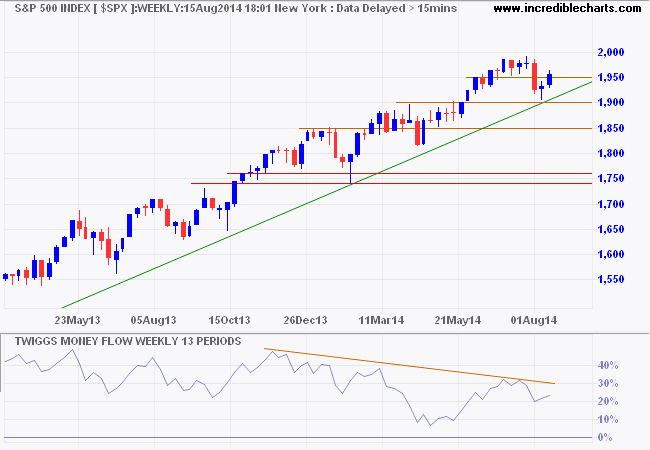
* Target calculation: 1500 + ( 1500 - 750 ) = 2250
CBOE Volatility Index (VIX) remains low, suggesting a bull market.
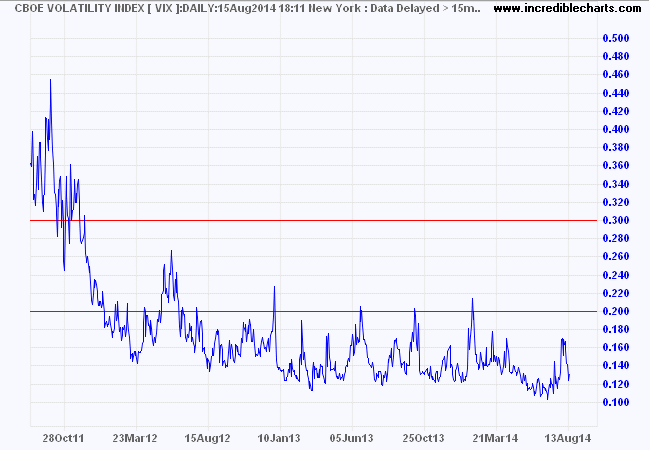
Dow Jones Shanghai Index is testing resistance at 295. Breakout would confirm a primary up-trend. Respect of resistance, however, would indicate further consolidation.
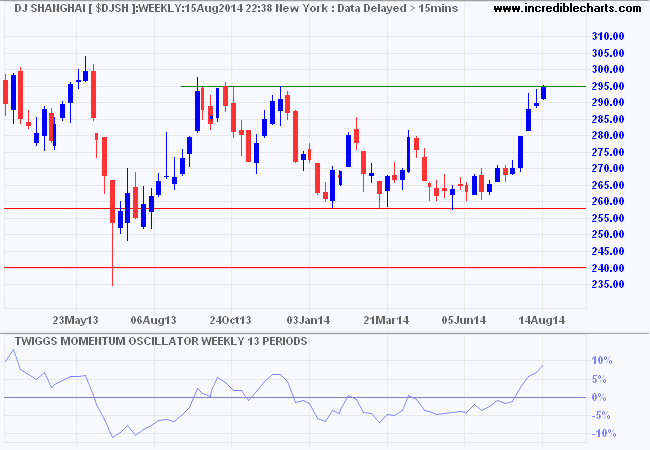
ASX 200 recovery above 5550 also suggests another advance. Respect of zero by 13-week Twiggs Money Flow would strengthen the signal. Reversal below 5450 is unlikely, but would warn of another test of primary support.
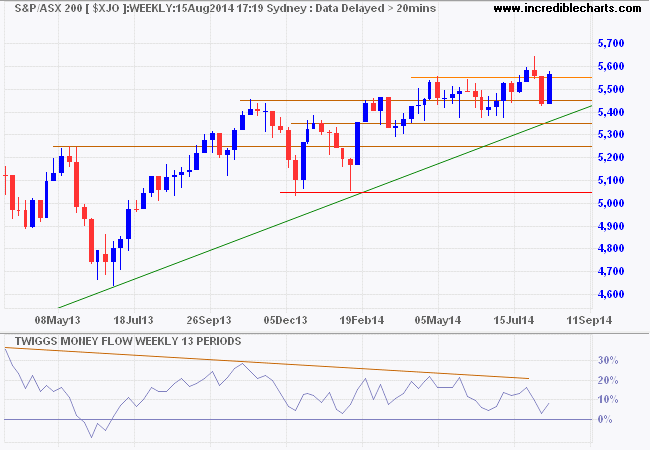
* Target calculation: 5400 + ( 5400 - 5000 ) = 5800
Secular stagnation?
Economic recovery after the Great Recession has been disappointing.
Employment levels remain low. Official unemployment figures ignore the declining participation rate. Employment levels, in the 25 to 54 age group, for males remain roughly 6%, and females 5%, below their previous peaks. Using the 25 to 54 age group eliminates distortions from student levels and from baby boomers postponing retirement.
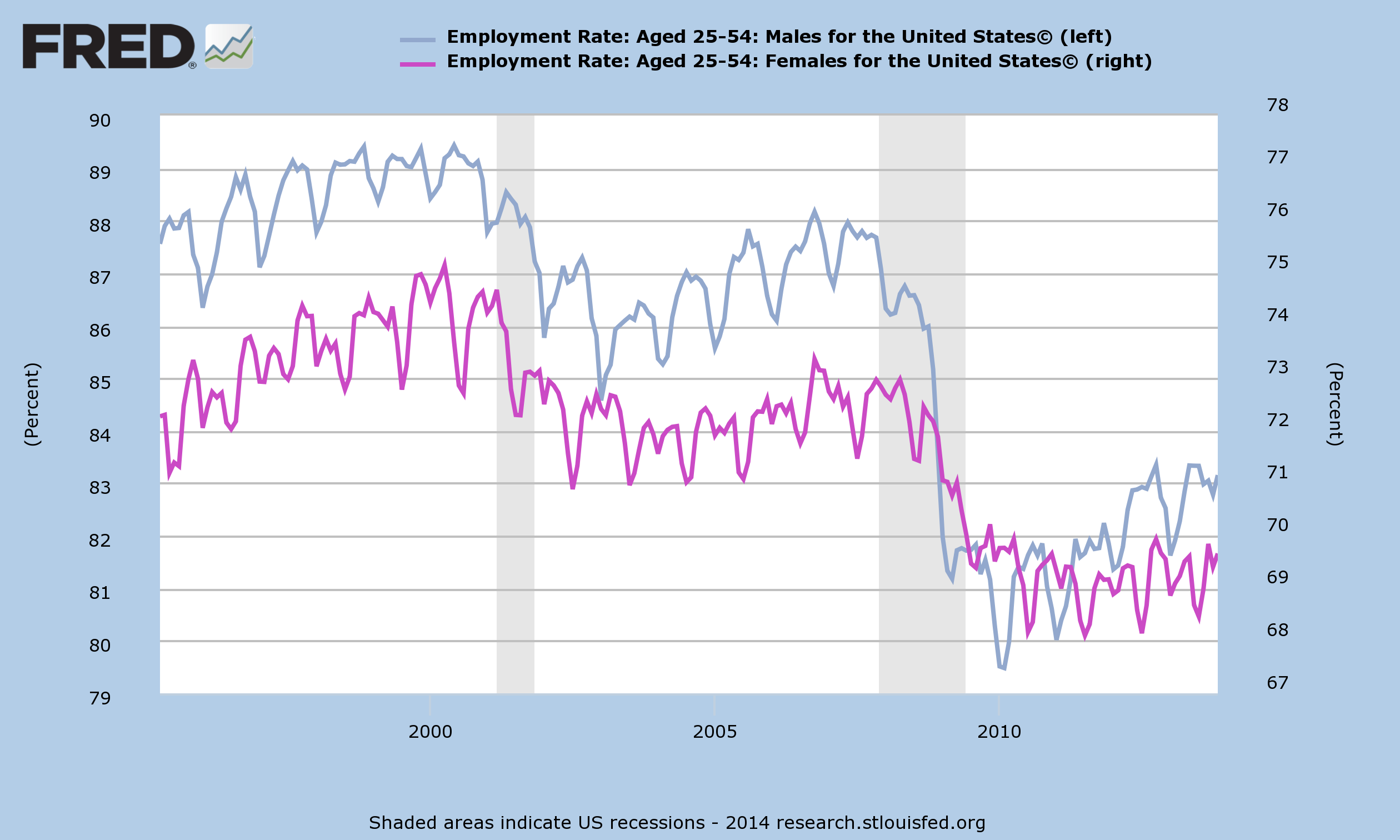
Manufacturing earnings, as would be expected, are also weak.
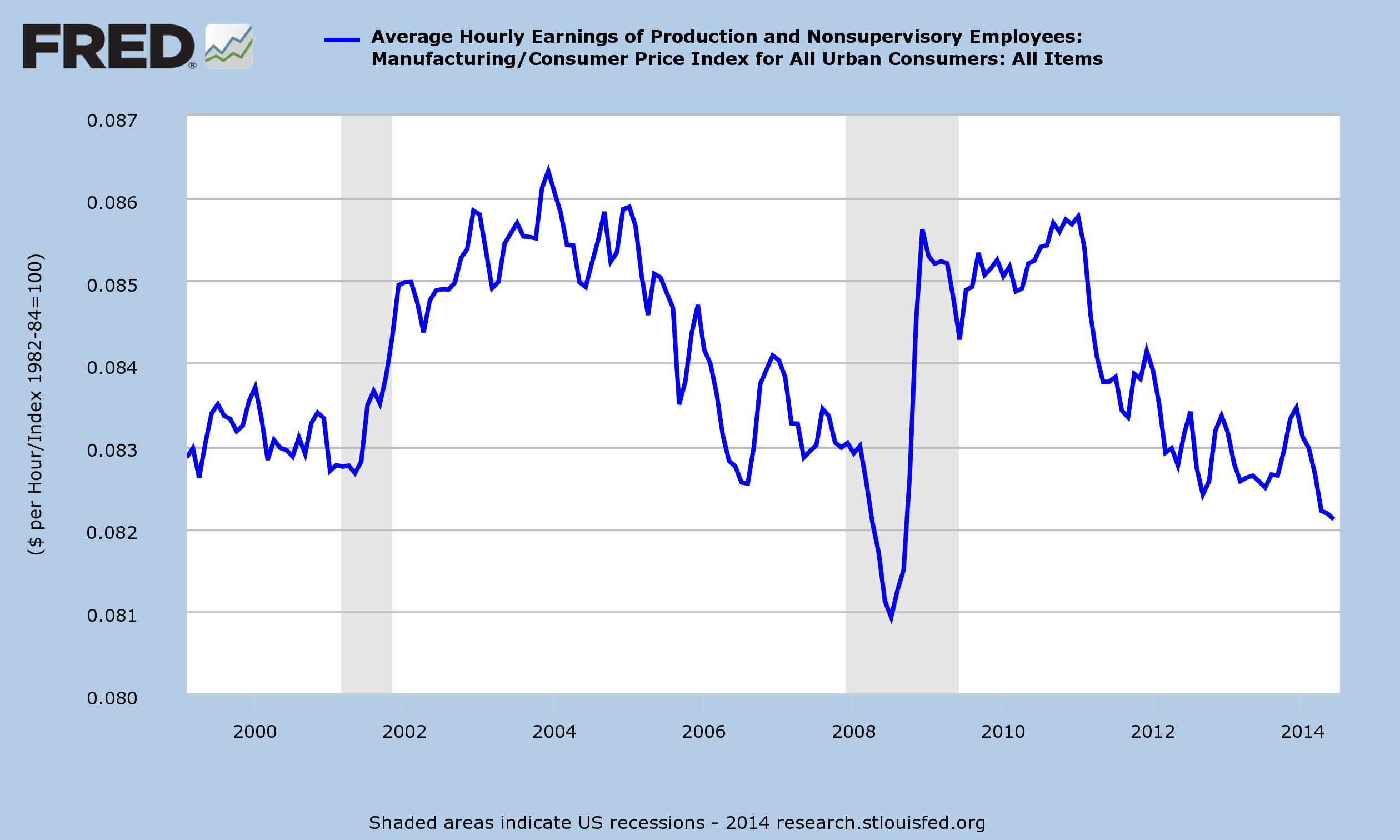
Sales growth remains poor.
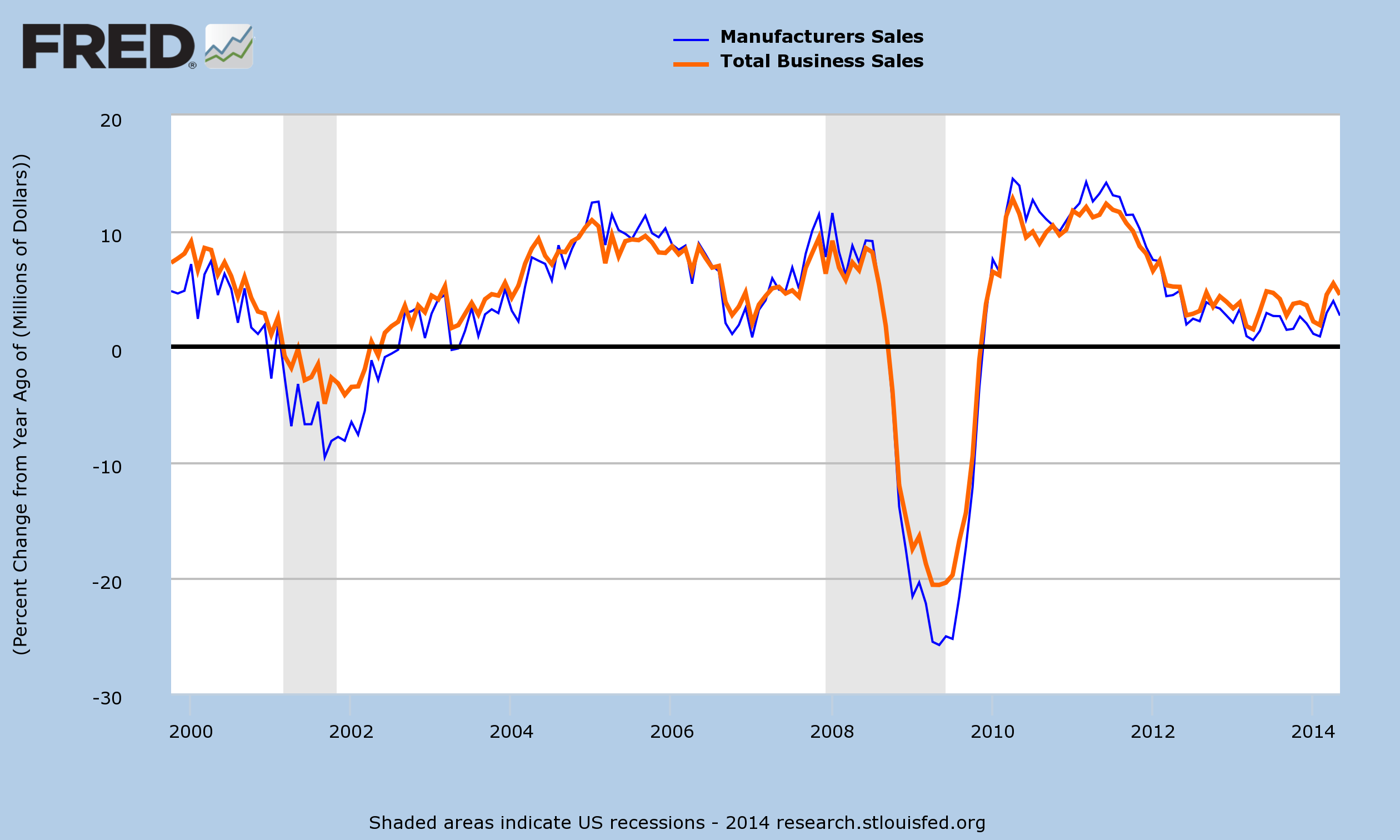
And real GDP growth is slow.
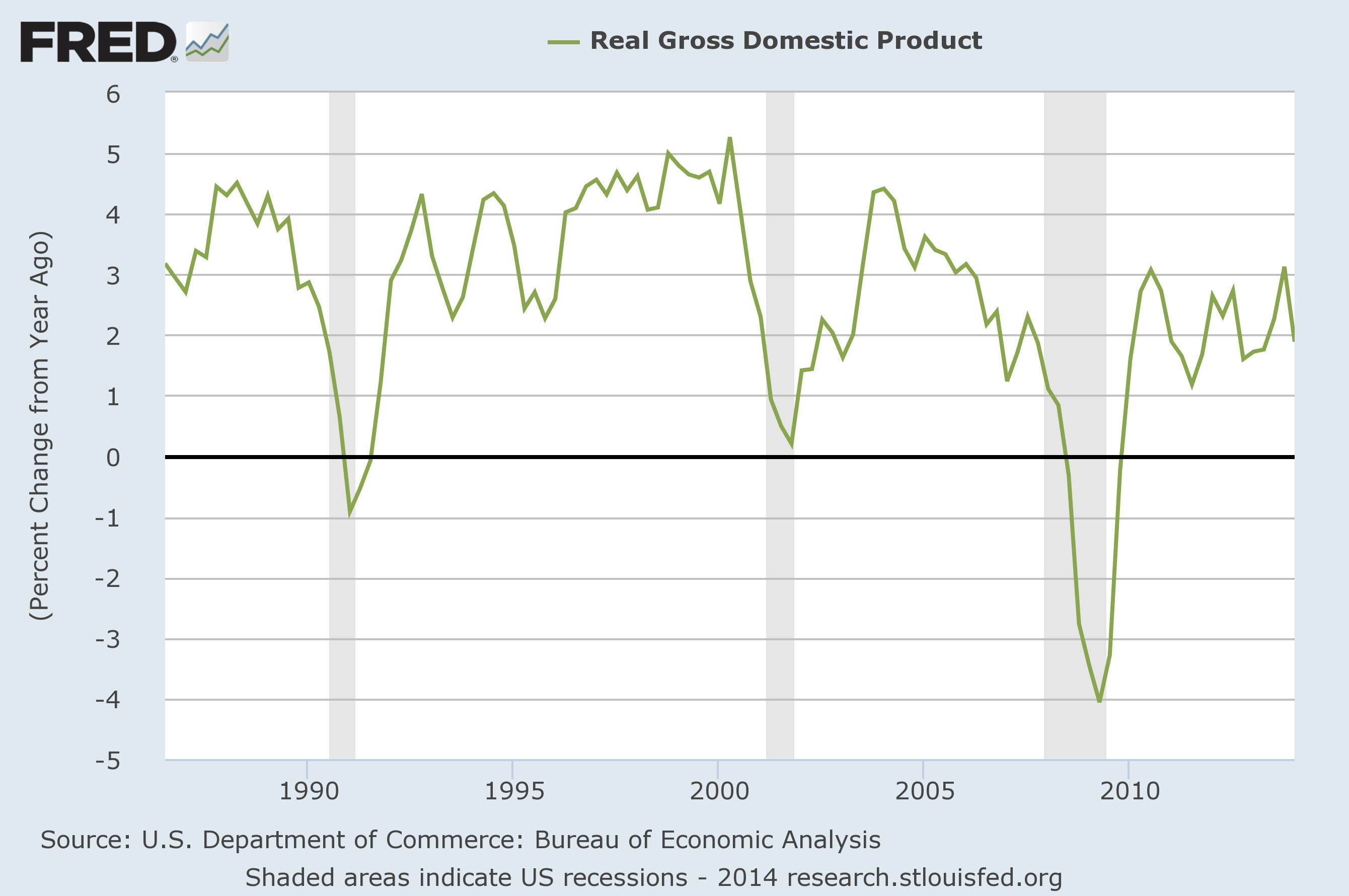
US Headwinds
Stanley Fischer, Vice Chairman at the Fed, in his address to a conference in Sweden, attributed slow recovery in the US to three major aggregate demand headwinds:
The housing sector
The housing sector was at the epicenter of the U.S. financial crisis and recession and it continues to weigh on the recovery. After previous recessions, vigorous rebounds in housing activity have typically helped spur recoveries. In this episode, however, residential construction was held back by a large inventory of foreclosed and distressed properties and by tight credit conditions for construction loans and mortgages. Moreover, the wealth effect from the decline in housing prices, as well as the inability of many underwater households to take advantage of low interest rates to refinance their mortgages, may have reduced household demand for non-housing goods and services. Indeed, some researchers have argued that the failure to deal decisively with the housing problem seriously prolonged and deepened the crisis.
A slow housing recovery is unfortunately the price you pay for protecting the banks. By supporting house prices through artificial low interest rates, you prevent markets from clearing excess inventories.
Fiscal policy
The stance of U.S. fiscal policy in recent years constituted a significant drag on growth as the large budget deficit was reduced. Historically, fiscal policy has been a support during both recessions and recoveries. In part, this reflects the operation of automatic stabilizers, such as declines in tax revenues and increases in unemployment benefits, that tend to accompany a downturn in activity. In addition, discretionary fiscal policy actions typically boost growth in the years just after a recession. In the U.S., as well as in other countries — especially in Europe — fiscal policy was typically expansionary during the recent recession and early in the recovery, but discretionary fiscal policy shifted relatively fast from expansionary to contractionary as the recovery progressed.
Anemic exports
A third headwind slowing the U.S. recovery has been unexpectedly slow global growth, which reduced export demand. Over the past several years, a number of our key trading partners have suffered negative shocks. Some have been relatively short lived, including the collapse in Japanese growth following the tragic earthquake in 2011. Others look to be more structural, such as the stepdown in Chinese growth compared to its double digit pre-crisis pace. Most salient, not least for Sweden, has been the impact of the fiscal and financial situation in the euro area over the past few years.
Supply-side
Fischer also cites the weak labor market, declining investment and disappointing productivity growth as inhibiting aggregate production.
While I agree with his view of the labor market, we should not use the heady days of the Dotcom bubble as a benchmark for investment. Private nonresidential investment is recovering.
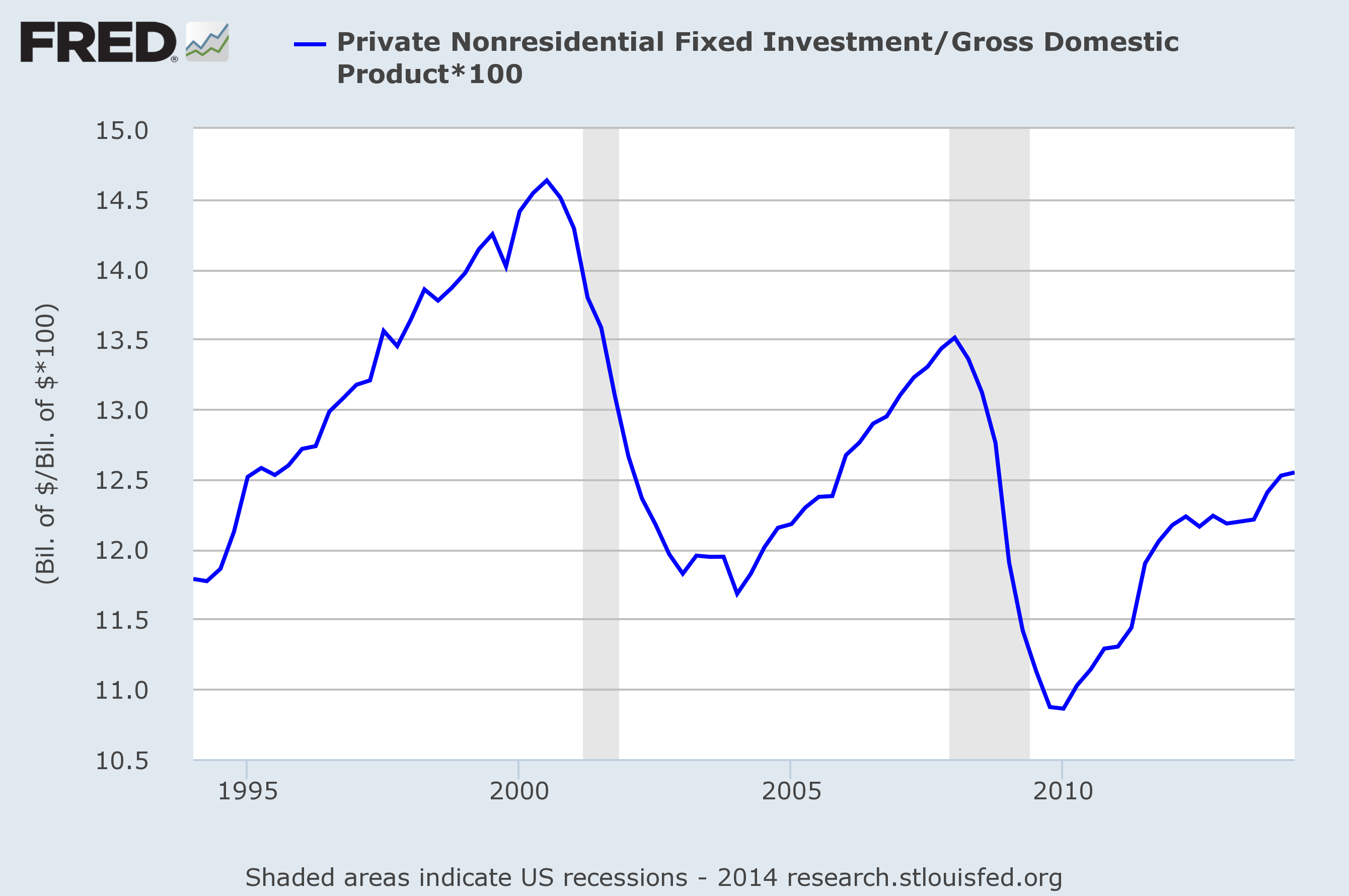
Productivity is also growing steadily.
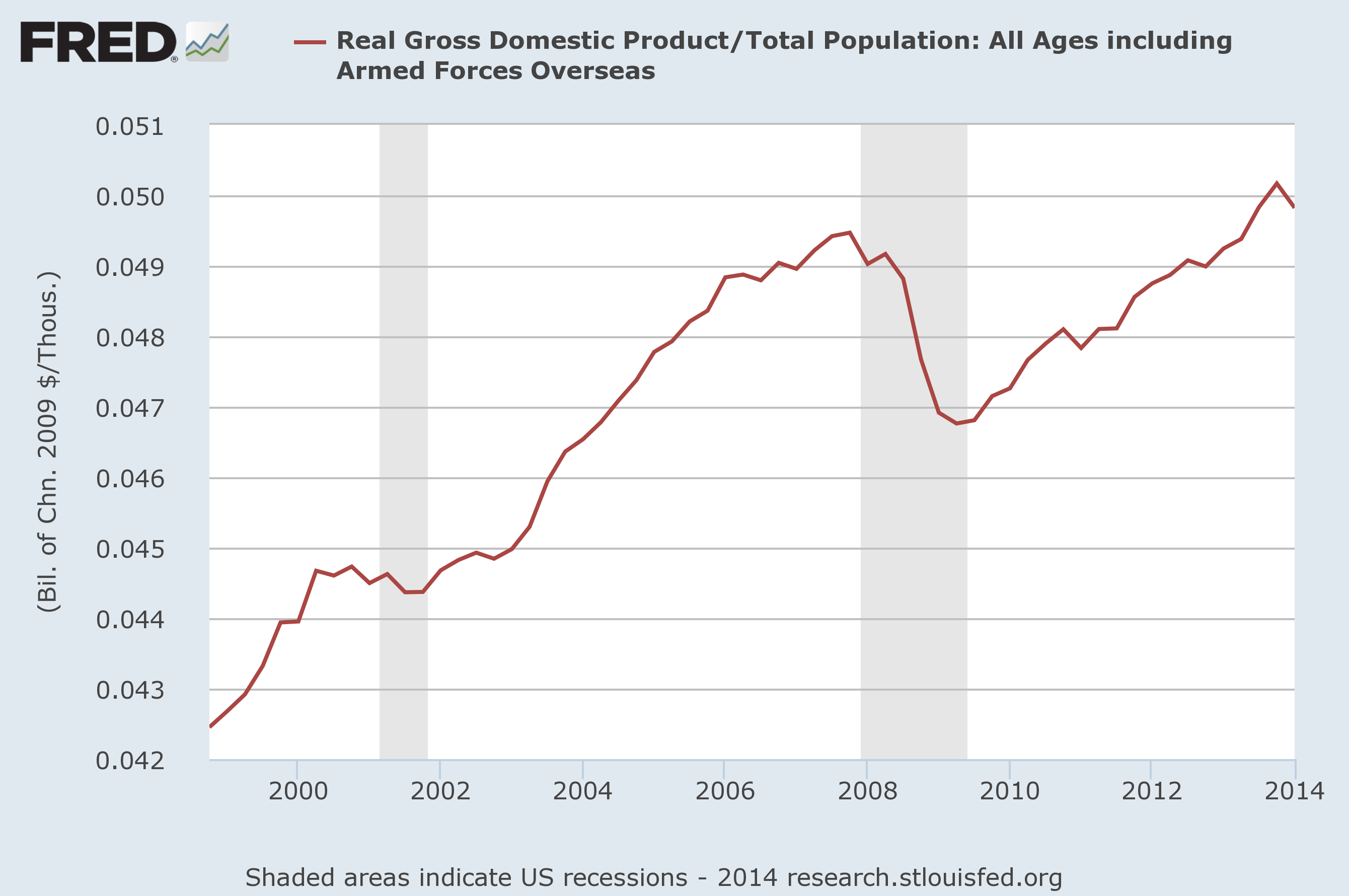
Other factors
There are two factors, however, that Fischer did not mention which, I believe, go a long way to explaining slow US growth.
Crude oil prices
In the last 4 decades, sharp rises in real crude oil prices have coincided with falling GDP growth and, in most cases, recessions. Crude prices remain elevated since the Great Recession and, I believe, are retarding economic growth. The blue line on the graph below plots crude oil (WTI) over the consumer price index (CPI).
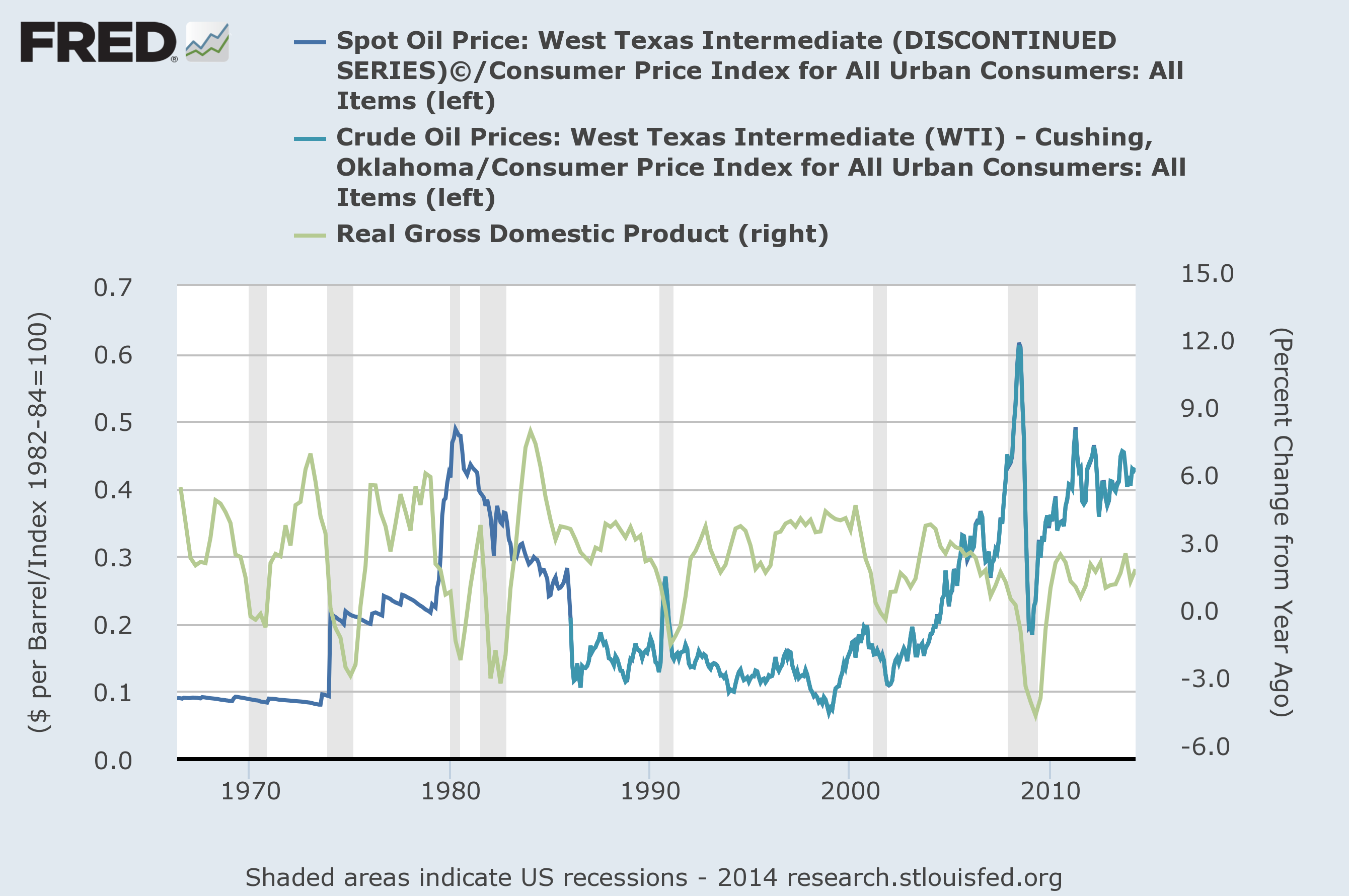
Currency manipulation
China continues its aggressive purchase of US Treasuries in order to maintain a competitive advantage of the Yuan against the Dollar. Inflows on capital account — not only from China — include roughly $5 trillion of federal debt purchased since 2001. This keeps the US uncompetitive in export markets and places domestic manufacturers at a disadvantage when competing against imports.
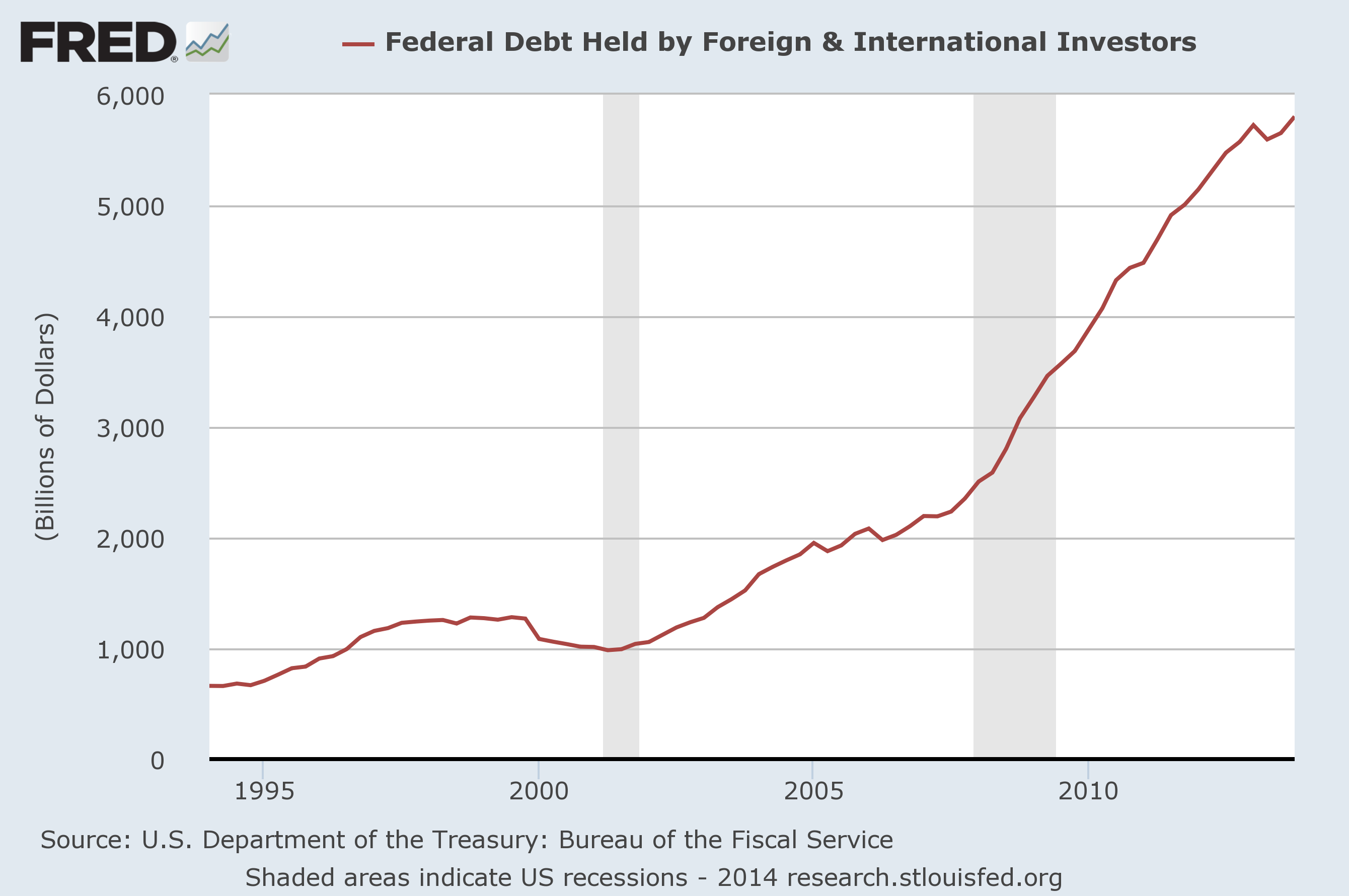
Recent purchases of federal debt are sufficient to drive 10-Year Treasury yields through support at 2.40%/2.50%.
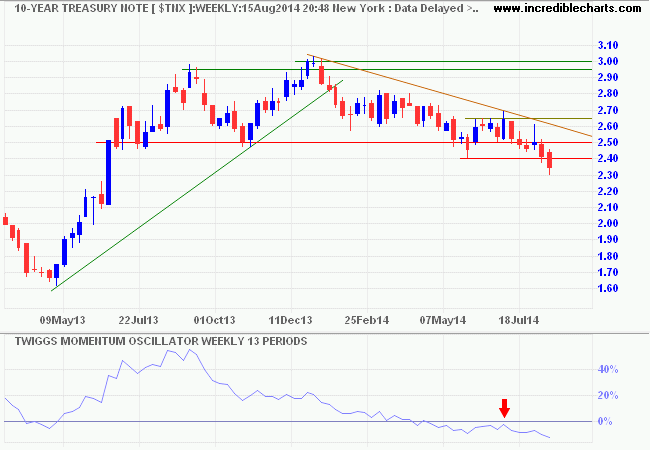
Glass half empty or half full?
Bears will no doubt seize on the headwinds to support their prediction of another market crash. I am reassured, however, that the economy has recovered as well as it has, given the difficulties facing it. None of the headwinds are likely to disappear any time soon, but progress in addressing these last two issues would go a long way to solving many of them.
That's all from me for today. Take care.
Men are moved by two levers only: fear and self interest.
~ Napoleon Bonaparte
Disclaimer
Research & Investment Pty Ltd is a Corporate Authorized Representative (AR Number 384 397) of Andika Pty Ltd which holds an Australian Financial Services Licence (AFSL 297069).
The information on this web site and in the newsletters is general in nature and does not consider your personal circumstances. Please contact your professional financial adviser for advice tailored to your needs.
Research & Investment Pty Ltd ("R&I") has made every effort to ensure the reliability of the views and recommendations expressed in the reports published on its websites and newsletters. Our research is based upon information known to us or which was obtained from sources which we believe to be reliable and accurate.
No guarantee as to the capital value of investments, nor future returns are made by R&I. Neither R&I nor its employees make any representation, warranty or guarantee that the information provided is complete, accurate, current or reliable.
You are under no obligation to use these services and should always compare financial services/products to find one which best meets your personal objectives, financial situation or needs.
To the extent permitted by law, R&I and its employees, agents and authorised representatives exclude all liability for any loss or damage (including indirect, special or consequential loss or damage) arising from the use of, or reliance on, any information. If the law prohibits the exclusion of such liability, such liability shall be limited, to the extent permitted by law, to the resupply of the said information or the cost of the said resupply.
Important Warning About Simulated Results
Research & Investment (R&I) specialise in developing, testing and researching investment strategies and systems. Within the R&I web site and newsletters, you will find information about investment strategies and their performance. It is important that you understand that results from R&I research are simulated and not actual results.
No representation is made that any investor will or is likely to achieve profits or losses similar to those shown.
Simulated performance results are generally prepared with the benefit of hindsight and do not involve financial risk. No modeling can completely account for the impact of financial risk in actual investment. Account size, brokerage and slippage may also diverge from simulated results. Numerous other factors related to the markets in general or to the implementation of any specific investment system cannot be fully accounted for in the preparation of simulated performance results and may adversely affect actual investment results.
To the extent permitted by law, R&I and its employees, agents and authorised representatives exclude all liability for any loss or damage (including indirect, special or consequential loss or damage) arising from the use of, or reliance on, any information offered by R&I whether or not caused by any negligent act or omission.

Author: Colin Twiggs is a former investment banker with almost 40 years of experience in financial markets. He co-founded Incredible Charts and writes the popular Trading Diary and Patient Investor newsletters.
Using a top-down approach, Colin identifies key macro trends in the global economy before evaluating selected opportunities using a combination of fundamental and technical analysis.
Focusing on interest rates and financial market liquidity as primary drivers of the economic cycle, he warned of the 2008/2009 and 2020 bear markets well ahead of actual events.
He founded PVT Capital (AFSL No. 546090) in May 2023, which offers investment strategy and advice to wholesale clients.
